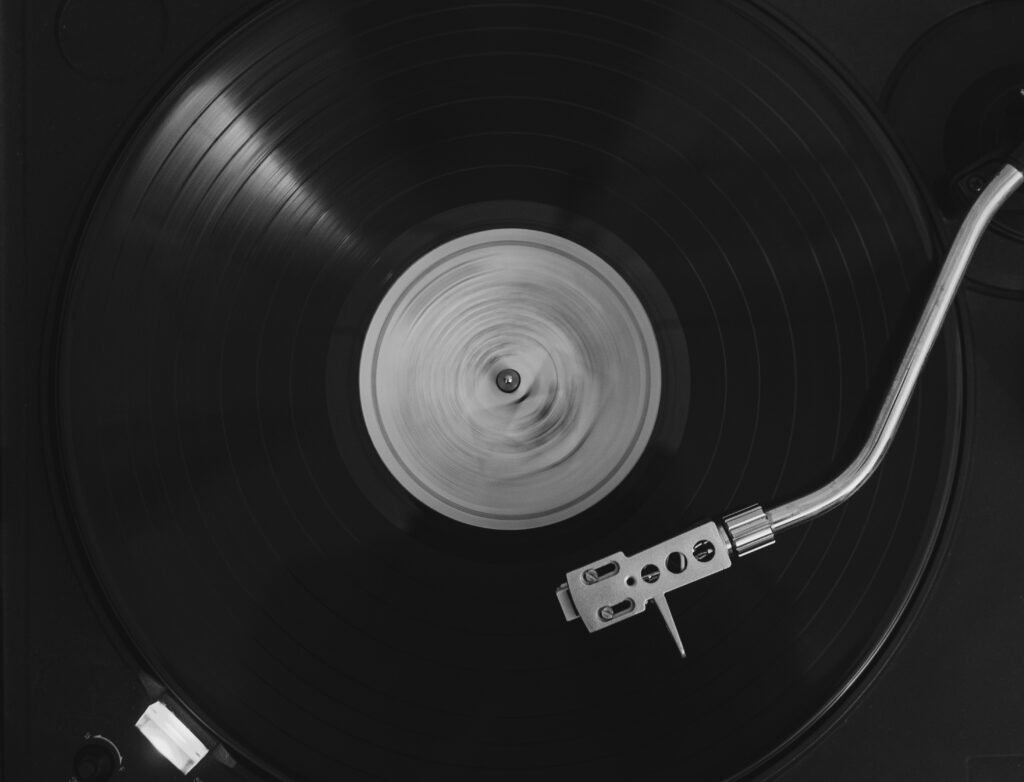Released in October 1973, Pin Ups finds David Bowie at a pivotal juncture in his career. Fresh off the success of Aladdin Sane and the rising fame of his Ziggy Stardust persona, Bowie was already a master of reinvention. But instead of charging forward with new material, he took a detour. Pin Ups is a covers album, a deliberate look backward during a time when his peers were leaning hard into innovation. That choice alone makes it a curious entry in his discography.
The record dives into Bowie’s teenage years, spotlighting tracks from mid-60s British and American bands like The Who, The Kinks, and Pink Floyd. It’s a sonic scrapbook of the music that shaped him before he shaped the music world in return. This isn’t Bowie pushing boundaries, as he did with Hunky Dory or The Rise and Fall of Ziggy Stardust, but rather paying homage. In interviews around the album’s release, Bowie described Pin Ups as a “nostalgic trip” meant to celebrate the music scene of London’s mod era. He wasn’t trying to outdo the originals. Instead, he wanted to reframe them through the glam-tinted lens he had made his own.
Sonic Exploration

From the opening riff of “Rosalyn,” Pin Ups plants its feet firmly in the grit and swagger of mid-60s British rock. The production, overseen by Bowie and longtime collaborator Ken Scott, avoids the polish that defined some of his earlier glam work. Instead, it leans into a raw, garage-influenced sound. The mix is tight but never overly refined, capturing the spirit of sweaty clubs and transistor radios. It’s an intentional step back from the elaborate arrangements of Aladdin Sane, trading in spectacle for immediacy.
The musical arrangements stick closely to the originals in structure but carry the signature Bowie twist. His vocal delivery often reshapes the mood of the songs. On The Who’s “I Can’t Explain,” he dials down the teenage angst and adds a theatrical lilt, while “Sorrow,” originally by The McCoys, is transformed into a sultry lament with rich saxophone flourishes and lush backing vocals. Mick Ronson’s guitar work remains a steady force throughout the album. He doesn’t radically reinvent the riffs, but his playing injects glam-rock muscle into even the more subdued tracks.
Genre-wise, Pin Ups lives mostly in the realm of British beat, mod rock, and proto-psychedelia. It doesn’t stretch into genre fusion or experimental territory, which marks a notable shift for Bowie. After pushing the boundaries of glam on his previous records, here he chooses to play within established lines. This choice is part of the album’s charm and also its limitation.
Lyrical Analysis

Since Pin Ups is composed entirely of cover songs, the lyrics don’t spring from Bowie’s own pen. Instead, they offer a window into the cultural pulse of mid-60s youth, full of rebellion, romantic angst, and existential rumblings. What makes the album interesting lyrically isn’t invention, but interpretation. Bowie reframes these songs, often subtly, through vocal phrasing and tone, nudging their emotional temperature in new directions.
The themes revolve around young love, disillusionment, and the energy of youth culture. Tracks like “Here Comes the Night” and “Sorrow” deal in heartbreak, while “Shapes of Things” touches on war and societal change. These are familiar stories, but Bowie’s renditions tend to elevate the emotional layers. His version of “Sorrow,” in particular, trades the original’s buoyancy for a slower, more plaintive delivery. The sadness feels more distilled, more adult. He isn’t just singing about loss—he’s steeped in it.
In terms of lyrical depth, the original compositions vary from simple and direct to subtly poetic. “Friday on My Mind” captures the restless grind of working-class life with plainspoken charm, while “See Emily Play” dips into psychedelic surrealism. Bowie doesn’t rewrite the lyrics, but his interpretive choices bring out textures that might have been overlooked in the originals. There’s a theatrical quality to his voice that invites a second listen, even when the words themselves are familiar.
Emotionally, the album walks a fine line between nostalgia and detachment. Bowie doesn’t seem to fully immerse himself in the youthful urgency these songs were born from. Instead, he treats them with a kind of affectionate distance, as if he’s honoring ghosts rather than reliving his own past. That approach gives the album a bittersweet undercurrent—it’s lively on the surface but tinged with a sense of farewell.
Cohesion and Flow

Pin Ups may be a covers album, but it’s curated with enough intent to feel like a unified collection rather than a random set of favorites. The track sequencing moves with a sense of purpose, beginning with the gritty stomp of “Rosalyn” and gradually easing into more introspective territory with tracks like “Sorrow” and “Friday on My Mind.” The pacing is solid, alternating between energetic bursts and slower, more melancholic moments, though it never strays too far from its central sonic thread.
Despite the variety of original songwriters and bands represented, there’s a thematic throughline that gives the album cohesion. Nearly all of the tracks explore youth from different angles—its passion, its confusion, and its fleeting intensity. Bowie’s glam-rock treatment acts as a unifying force, giving even the more psychedelic or rhythm-and-blues-based songs a shared aesthetic. Mick Ronson’s guitar work and Trevor Bolder’s bass lines further anchor the record, lending it a sense of familiarity from track to track.
However, the album doesn’t build toward a clear emotional or narrative climax. There’s no arc in the traditional sense, which makes it feel more like a mixtape than a conceptual statement. This lack of evolution can make the second half feel slightly repetitive. While no track truly falters, the emotional terrain starts to flatten as the album goes on. Still, the consistency in tone and style helps smooth over any dips in momentum.
Standout Tracks and Moments
While Pin Ups maintains a steady tone throughout, a few tracks rise above the rest, either for their emotional resonance or Bowie’s inventive reinterpretation.
Sorrow
“Sorrow” is the undeniable centerpiece. Originally a jaunty number by The McCoys, Bowie strips it down into a slow-burning ballad laced with melancholy. His voice carries a weight that wasn’t present in the original, and the arrangement—complete with swooning strings and harmonized backing vocals—elevates the track into something more haunting. It’s one of the few moments on the album where Bowie seems fully immersed in the emotion, rather than simply observing it.
See Emily Play
“See Emily Play” stands out for a different reason. As a tribute to Syd Barrett’s brief but brilliant creative flash, the track is laced with psychedelic charm. Bowie leans into the whimsy without turning it into parody. There’s a touch of reverence in his delivery, paired with layered effects that nod to Barrett’s experimental legacy. The track’s surreal quality momentarily shifts the mood of the album, adding a welcome splash of strangeness.
Friday on My Mind.
Another highlight is “Friday on My Mind.” Bowie’s version captures the weary grind of the workweek with just enough flair to keep it compelling. The sharp contrast between the verses and the euphoric chorus is well-handled, and it’s one of the few tracks where the energy truly lifts off. It’s not a radical reinterpretation, but it hits a sweet spot between homage and personality.
Memorable Moments
As for memorable moments, the intro to “Rosalyn” deserves a mention. That opening guitar riff is raw and brash, immediately setting the album’s tone with its punchy, almost live-sounding energy. And in “I Can’t Explain,” Bowie’s subtle changes in vocal phrasing add a theatrical edge, turning teenage frustration into something more performative and stylized.
Artistic Contribution and Innovation

Within the landscape of glam rock and early 70s popular music, Pin Ups is a curious entry—neither a bold leap forward nor a retreat into safety. It arrived at a time when Bowie was at the peak of his Ziggy-era fame, and many expected another daring move. Instead, he delivered a covers album, something more common among fading stars than rising ones. That decision, in itself, was a quiet kind of defiance. In an industry obsessed with constant reinvention, Bowie hit pause to look back.
Genre-wise, Pin Ups doesn’t bend the rules. It stays rooted in mid-60s British rock and rhythm and blues, faithful in structure and tone. There’s no major genre shift here, no fusion of disparate styles. Yet what makes the album notable is its conceptual framing. Rather than treat these songs as mere filler or contract obligation, Bowie positioned them as a tribute to the music scene that birthed him. It’s a glam star recontextualizing the past, not as nostalgia bait, but as cultural preservation.
Innovation on Pin Ups is subtle but present. The most striking element is Bowie’s ability to reshape songs through performance alone. He doesn’t need to rewrite a line or rearrange a melody to make it feel like his own. His voice carries theatrical weight, turning even straightforward lyrics into small acts of reinvention. The production also leans toward a live feel, which was a notable shift from the layered, almost cinematic textures of his previous albums. This rawness complements the idea of capturing the spirit of London’s mod clubs and underground shows.
Closing Thoughts

Pin Ups is an album that occupies a quiet but intriguing corner of David Bowie’s vast discography. It doesn’t reach for the stars like Ziggy Stardust or plunge into experimentation like his later Berlin-era work. Instead, it turns the spotlight outward—toward the bands and songs that shaped Bowie before he became a shaper of culture himself. That act of homage is both the album’s charm and its ceiling.
Its strengths lie in its tight musicianship, charismatic performances, and the reverence with which Bowie treats the material. The production feels immediate, and there’s a consistency in tone that makes for an easy, if somewhat linear, listening experience. Tracks like “Sorrow,” “See Emily Play,” and “Friday on My Mind” show Bowie’s ability to add depth and dimension through sheer interpretation.
Still, the album doesn’t push many boundaries. It plays within the lines of the originals rather than transforming them into something entirely new. While that choice feels deliberate, it limits the album’s lasting impact. For some listeners, Pin Ups may feel like a detour—pleasant, well-executed, but ultimately non-essential in the arc of Bowie’s innovation.
Rating: 7/10
A solid, stylish tribute that captures Bowie’s love for 60s rock with flair, but lacks the creative ambition that defines his most celebrated work. It’s a worthy listen, especially for fans, though not a defining moment in his catalog.
